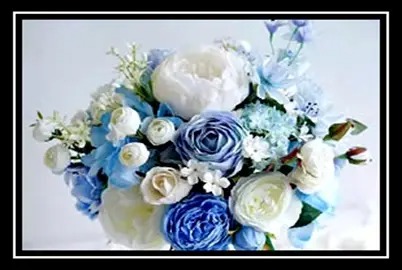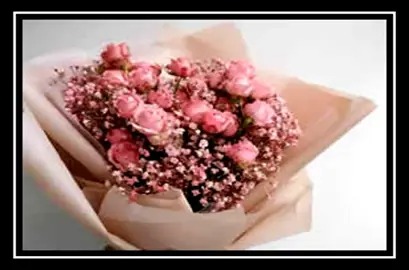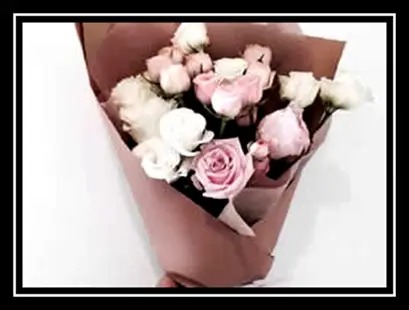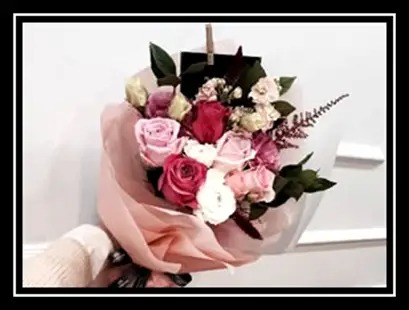The simple and practical six basic methods of flower arrangement in the flower arrangement training class
The six basic flower arrangement methods in the flower arrangement training class are to achieve the vividness and naturalness of flower arrangement works and to maintain the center of gravity balance of flower arrangement bouquets to achieve the desired purpose. Flower arrangement has certain requirements for the layout of flower raw materials, which are the six basic flower arrangement methods, that is, flower arrangement should be staggered, bouquets should be sparse and dense, flower arrangement products should combine virtuality and reality, the overall arrangement of the work should echo each other, when arranging flowers, you should understand that the upper part should be light and the lower part should be heavy, and the design of flower shapes should be scattered on the upper part and gathered on the lower part. These are the six basic flower arrangement methods. Flower arrangement is based on the principle of artistic beauty. Flower arrangement summarizes the theories obtained by the actual operations of flower arrangement scholars of all ages, and the specific principles of modeling obtained by flower arrangement scholars combined with the practice of modern flower arrangement.

Six basic points of flower arrangement:
1. The height of flower arrangement should be staggered: that is, the position of the flowers should be staggered in height and front and back. When arranging flowers, it is best not to make flower art works on the same horizontal or straight line. The design of flower arrangement materials should have a multi-faceted three-dimensional space structure to express the appearance of the finished product, that is, it is required to use points, lines, surfaces and other modeling elements in a three-dimensional space to arrange the positions in a layered manner, with clear layers up and down, left and right, front and back, and tend to be unified and neat, in order to avoid the main flowers of the flower arrangement being on the same horizontal line or the same vertical line.
2. The bouquet should be sparse and dense: when arranging flowers, each flower and each leaf should have ornamental value and design composition effects. Don't be too dense to be complicated, and don't be too sparse to be empty. The raw materials of flower arrangement should be sparse and dense in the arrangement, and the finished flower arrangement should allow the viewer to have a natural beauty change. Sparse can run horses, dense is not suitable for wind. Sparse and dense are staggered. Flower arrangement is generally dense at the center of gravity of the work, and sparse away from the center of gravity of the work. There should be blank spaces in the work, but there should be a contrast between density and sparseness, and don't fill it up completely.

3. The finished flower arrangement should combine the real and the imaginary: the finished flower arrangement is real, and the leaves are imaginary. Flowers without leaves lack the foil, and leaves without flowers lack the entity: the buds are imaginary, the full flowers are real, the vines are imaginary, the center flowers are real, the front flowers are real, and the back flowers are imaginary: the block flowers are real, the small flowers are imaginary: the surface leaves are real, the linear leaves are imaginary, etc.
4. The overall ups and downs of the flower arrangement should echo: the bouquet should have flowers up and down, the branches and leaves should look around and echo around the center, which not only reflects the integrity of the work, but also maintains the sense of balance of the work. Whether it is a single work or a combination of works, it should show its integrity and sense of balance. The flowers should look around and echo around the center of gravity, and the spirit should be coordinated. The flower arrangement should not only reflect the integrity of the work, but also maintain the balance of the work. The flower arrangement flowers look around and echo around the center of gravity, and the spirit should be coordinated, so that it can form a whole. The ups and downs of the flower art flowers should be able to draw the viewer's eyes to the center of gravity, creating a sense of stability and beauty.

5. Flower arrangement should be light on top and heavy on the bottom: flower buds on top, full bloom on the bottom. Light colors on top, color-maintained on the bottom, to look balanced and natural. Flowers are not light or heavy, but the difference in texture, shape and color creates a psychological sense of lightness and heaviness. It is easier to achieve coordination when flower arrangements with similar texture and appearance are combined together. On this basis, flowers of different colors can be combined to achieve a colorful and coordinated effect. Flower arrangement generally refers to small, light, and light-colored flowers on top or outside (far from the center of gravity). Otherwise, they should be inserted near the center of gravity. The flower arrangement works remain balanced and stable, and look natural and full of vitality. Flower buds are on top, and full bloom flowers are on the bottom. Light-colored flowers are on top, and colorful flowers are on the bottom. In this way, the center of gravity of the work is kept stable. For example, if the full bloom flowers are on top, only flower buds can be inserted below. If the dark flowers are on top, light-colored flowers can be inserted below to achieve a balanced center of gravity of the flower arrangement works.

6. The design of flower patterns should be scattered at the top and gathered at the bottom: it means that the parts of the flower materials should be gathered like trees, twisted into a strong force, as if they are from the same root, and the upper parts should be scattered like branches, giving full play to the natural personality of the flowers, appropriately scattered, and graceful, so that the work has both a varied and rich personality and a uniformity. The ancient saying "flower arrangement is very tight" means that the base of the flower materials is gathered together, and the upper part is naturally scattered, like a bush, naturally orderly. In addition to mastering the basic six methods, we should also pay attention to the configuration principles of flower arrangement art. The principle of rhythmic change is to use the differences in different flower types, colors, flower shapes, flower sizes, heights, and degrees of opening, as well as the changes in the bending and tilting of branches to increase the rhythm of the work picture. At the same time, these changes should conform to the objective laws and the requirements of artistic design composition to achieve the desired effect of the design. The principle of balanced flower material configuration mainly deals with the relationship between light and heavy in flower arrangement. Pay attention to the principle of harmony. Not only does it require the size and shape of the flower arrangement materials to be coordinated, but it also requires that the color of the flower arrangement be coordinated with the color of the container and environmental utensils, and coordinated with the surrounding atmosphere.
Source: Edinburgh Flower Arrangement and Wedding Training Center